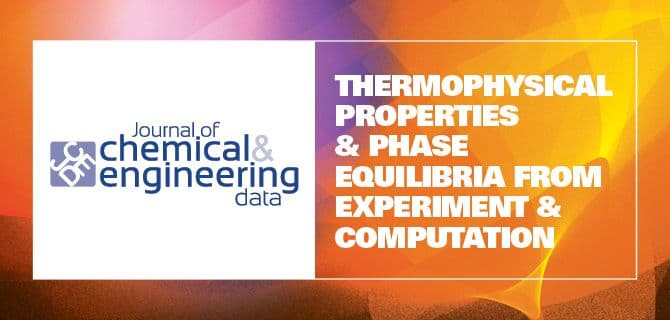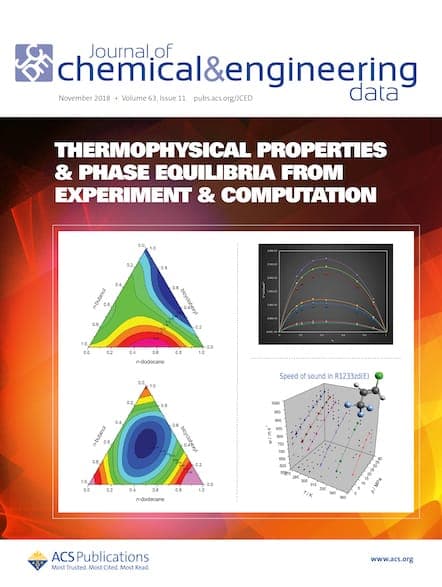More than five years ago, Dr. Joan Brennecke signed on as Editor-in-Chief of the Journal of Chemical & Engineering Data (JCED). She had no prior editorial experience, so when she accepted the position she brought with her a fresh perspective. Since settling into their new roles, Brennecke and her team of Associate Editors have been […]

More than five years ago, Dr. Joan Brennecke signed on as Editor-in-Chief of the Journal of Chemical & Engineering Data (JCED). She had no prior editorial experience, so when she accepted the position she brought with her a fresh perspective.
Since settling into their new roles, Brennecke and her team of Associate Editors have been identifying important topical areas that should be covered in the journal’s scope. For example, over the last few decades, there has been a growing emphasis on molecular modeling and simulation, thanks to technological advancements, and Brennecke seeks to emphasize the complementarity between experimental and computational data.
“When I was a graduate student 30 years ago, I remember the molecular simulation people saying, ‘We won’t have any need for experiments in five years. ‘ Well, it’s 30 years later, and we still need experimental data. But what it does mean is they’re able to do molecular modeling and simulation of much more realistic systems. It’s not just the trends that they can understand, they can actually give quantitative values of things,” Brennecke said.
Industry has not been as quick to adopt molecular modeling and simulation, but Brennecke said that is changing, as industry research groups are hiring scientists with PhDs in molecular simulation. The changes in academia and industry are what Brennecke seeks to reflect in the journal.
“Before we accept a paper for publication, NIST actually runs it through sort of a data checking system … where they compare the data with stuff that’s in their database, and send back a report for our editorial team to evaluate,” she said.
“In many cases the authors have to do some revisions. Sometimes it’s as simple as they had typographical errors in tables, but sometimes it’s more serious than that.”
The journal is trying to include more papers on molecular modeling and simulation. Brennecke said that modeling and simulations are particularly important in cases where experiments cannot be done for safety or financial reasons. By updating the cover design and developing more explicit branding elements, Brennecke and the editorial team are working to make it clear to those in the field that they want to publish computational data as well as experimental data, which has traditionally been published in JCED.
“What we’re trying to do now is to develop guidelines for molecular modeling and simulation results that somewhat mirror the guidelines that we have for experimental data. So that we can check – just as NIST checks the experimental data, to make sure that people report uncertainties and that they’ve done things in reasonable ways – to try to validate the molecular modeling and simulation papers,” she said.
This is necessary because there are numerous choices (e.g., of forcefields and techniques) in performing simulations that can lead to incorrect results. The current lack of validation or requirements for molecular modeling and simulations results, can lead to errors in the eventual publication, Brennecke said.
The journal has also put more of an emphasis on full-length papers, moving away from the short articles published in the past.
“Shorter articles didn’t lead to faster publication times, just fractioning work into smaller and smaller tidbits of information. And that’s what we want to get away from. We want there to be a substantial amount of new information in each article,” Joan Brennecke said.
The results presented in papers in JCED are long-lasting, she said, so it makes more sense for the journal to publish as many details as possible.
Later this year, the journal will publish the Proceedings of the International Conference on Properties and Phase Equilibria for Product and Process Design (PPEPPD), an independent conference on thermodynamics that is held every three years. It will be the first time that JCED has published the proceedings.
“It’s an exciting time for me, because we’re trying to make this shift in emphasis, and yet it’s really wonderful to be part of a journal that has a long history. We hope authors and readers of both experimental and computational work will find value in what JCED is trying to do, and submit great work to the journal,” Joan Brennecke said.
